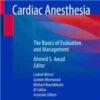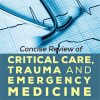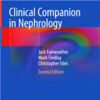Navigating Medical Emergencies – An interactive guide to patient management
navme.royalcollege.caThis free eBook presents emergent clinical situations and the core tasks required of healthcare professionals needing to recognize, navigate and safely manage them. It’s really about how to perform the ABCs while protecting yourself, the patient and others; attempting to establish therapeutic relationships; and respecting patients’ values and wishes. When first called upon to manage acutely ill patients, the healthcare team must initiate their ABCs to support and keep patients alive even though information is lacking (i.e., the undifferentiated situation). As information trickles in, the team’s mental model evolves and becomes more refined. This allows resuscitative efforts to be modified and enables the introduction of more specific measures to directly address the source of the problem.
Given an undifferentiated situation (e.g., severe hypoxemia) or goal (e.g., initiate mechanical ventilation), the authors of this eBook were asked to identify which tasks should be carried out and when. These time-sensitive tasks are presented using maps to better illustrate their sequence and interaction with one another. These maps are designed to help clinicians develop a common approach to life-threatening situations, thus facilitating the development of shared mental models. Effective teamwork saves lives, and we echo opinions stating that individuals working within healthcare teams benefit from having a shared language, collective anticipatory thinking structure, and evidence-informed method to guide what should and must be done. Our hope is that these maps will help healthcare professionals to better lead and supportively follow each other to rescue and avoid harming patients; through improved communication, coordination, member checking and backup behaviour.

















